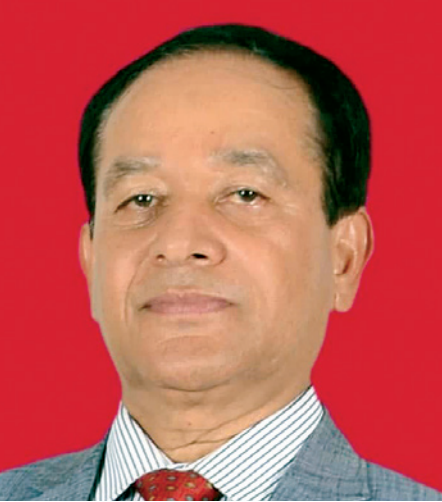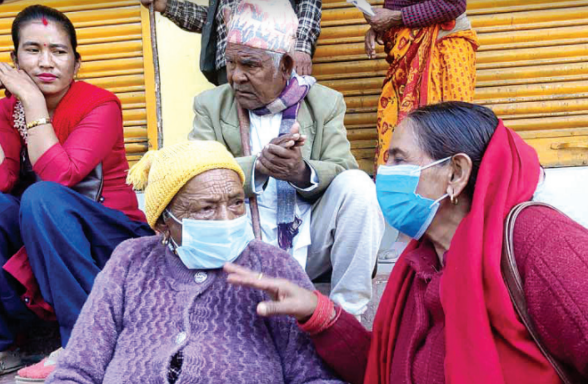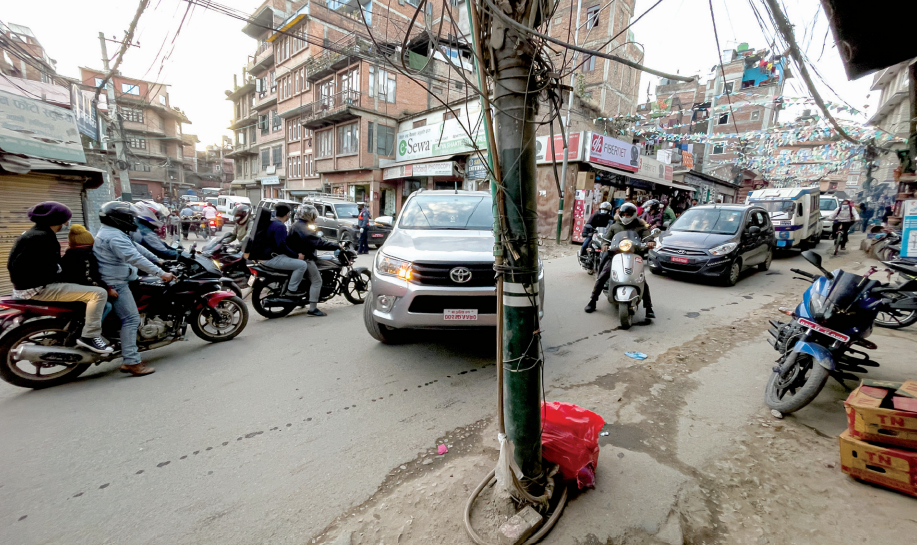Nepal struggling to deal with new refugees
In the past year or so, the trend of Rohingya and Afghan migrants coming to Nepal through the open border with India has accelerated. This is a delicate humanitarian issue but it is also proving to be a headache for the country’s security agencies who fear unchecked immigration could imperil national security. Moreover, foreign nationals are entering the country not just from Myanmar and Afghanistan.
Countries around the world are caught up in various kinds of conflicts. The likes of Afghanistan, Pakistan, Syria, Lebanon, Myanmar, Somalia and Iraq are in the midst of crippling civil wars, leaving thousands dead and countless more homeless and destitute. Desperate, many of them choose to leave their home country.
Even in Nepal, over 17,000 people were killed during the Maoist insurgency and hundreds of families were displaced. Youths started deserting villages; many Nepalis took refuge in other countries.
Nepalis have found refuge in the US, Japan, Canada and some European countries. Many have submitted papers certifying the high risk of their return home, making them eligible for residency abroad. The same is the case with 716 nationals from 10 countries—Iran, Pakistan, Bangladesh, Somalia, Myanmar, Sri Lanka, Afghanistan, Iraq, Congo and Togo—who have taken shelter in Nepal. They do not want to go back to their own country but nor can they legally stay in Nepal. Even though the United Nations High Commission for Refugees (UNHCR) lists them as refugees, Nepali laws do not recognize them.
Nepal has instead been treating them as illegal migrants. The country does not recognize refugees from anywhere bar Tibet and Bhutan. Many of these migrants don’t have any papers linking them to their home countries, including their passports. All they have are identification documents issued by the UNHCR, making them liable to get some help from the global body.
Yet even the UNHCR has cut down on the help it was extending to them, with the excuse that the UN headquarters has significantly cut funding following the Covid-19 pandemic and that the bulk of the sum allocated for refugees has had to be diverted in dealing with the Rohingya refugees in Bangladesh. Many of the migrants struggle for two meals a day and yet they opt to stay put in Nepal.
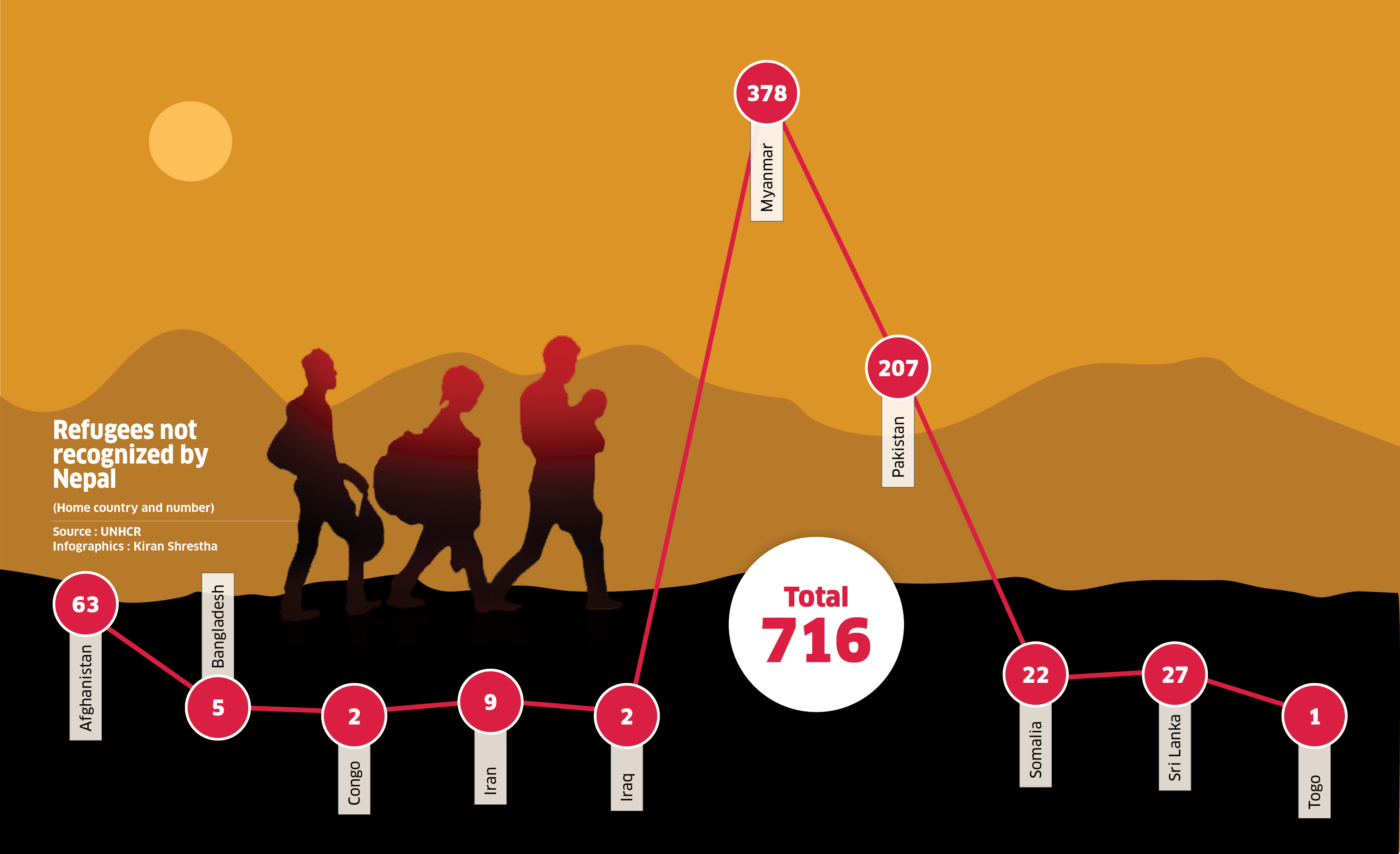
It is relatively easier for people from Myanmar and Bangladesh to seek refuge in Nepal given the open Nepal-India border and the weak presence of the Armed Police Force in border areas. But why do folks from Somalia, Pakistan, Iraq and Congo come here, after long flights and multiple transits? Are human traffickers bringing them to Nepal with the promise of taking them to Europe and America?
No one has clear answers to these questions, neither the government nor the UNHCR.
Just about anyone can enter Nepal on a tourist visa. Our security arrangements at the Tribhuvan International Airport are lax. Due to our unclear immigration policy and connivance of the APF deputed at the border, the number of illegal migrants in Nepal continues to increase. When the Rohingya enter Nepal via India, the AFP does not stop them, and the same is true of Afghans. Police sources speak of many Afghans who have entered Nepal, destroyed their papers and applied for refuge with the UNHCR.
Many of them come to Nepal with dreams of making it to western countries yet not all of them are successful.
In one way, the migrants in Nepal have become stateless. The Rohingya are the most numerous of all migrants in Nepal, followed by Pakistanis (see the table alongside). They struggle on a day-to-day basis. Rohingya, Afghans, Pakistanis and Somalis are often seen protesting in front of the UNHCR Nepal office in Kathmandu, asking for more help to sustain their livelihood.
After they felt that the UNHCR was ignoring them, the Rohingya started entering Nepali villages in search of jobs. Nepali contractors employed them in homebuilding in places like Biratnagar, Kavre and Gorkha. But even the contractors started swindling them when they learned of their illegal status. These foreign nationals are also under constant gaze of security agencies.
The Rohingya mostly live in a camp in Kathmandu’s Kapan while Pakistanis and Afghans are scattered across Chappal Karkhana and Bansbari. Likewise, Somali women mostly live around Lazimpat. A 40-year-old Somali woman said she was thrown out of her flat when she could not pay her rent during the recent Covid-10 lockdown. (Speaking to ApEx, she also confessed to destroying her documents so didn’t have to go back home.) All those listed with the UNHCR do menial jobs.
UNHCR’s role
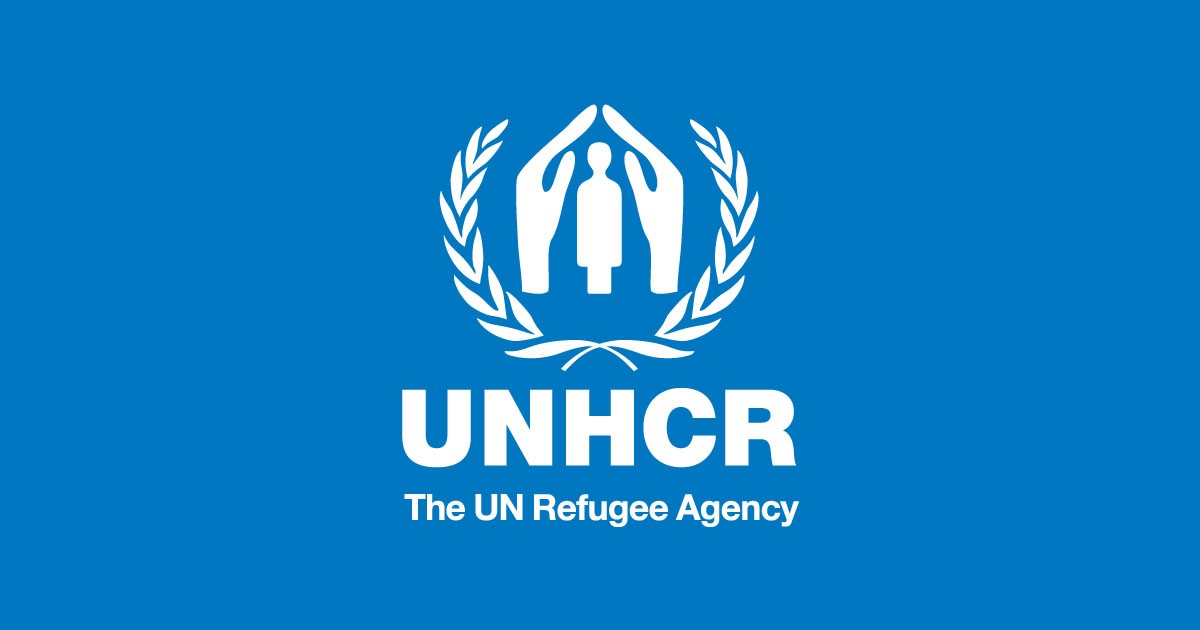
The UNHCR accepts applications from would-be refugees. It does thorough background checks and rejects applicants with criminal records. The organization issues refugees cards after six months of rigorous investigation. Though listing with the UN body comes with few perks, just being listed makes many feel more secure.
The UNHCR, in cooperation with the International Organization for Migration (IOM), has also been resettling refugees in Nepal in western countries like Canada and Sweden. At the request of the two bodies, the Nepal government has been helping with their third-country resettlement.
But many accuse the UNHCR of negligence in looking after the refugees. It cannot even guarantee their basic needs. Many refugee children have been denied education. Even when they get enrolled in school, they cannot attend online classes as they don’t have computers or smartphones. One Rohingya refugee visited ApEx offices in Teenkune recently, requesting this correspondent to arrange a laptop for his daughter who wants to study online. “The UNHCR doesn’t help us in anyway. Please publish news highlighting our plight,” he requested.
All these incidents suggest that Nepal needs a clear-cut immigration and refugee policy. The current state of ambiguity might be convenient for many but it is not a sustainable—or safe—arrangement.
Deviram Sharma, Former chief, National Investigation Department
A growing security threat
Illegal migration is now a global phenomenon. Geographically and economically big countries might not be burdened much by this problem. In fact, the likes of the US, Australia and France have been accepting many migrants. But for a country like Nepal with a small economy and high unemployment, the entry of migrants might pose a big national security challenge.
If the migrants cannot return to their own countries or be rehabilitated in third countries, there is a risk of them getting involved in illegal activities on Nepali soil. As the government’s oversight is poor, there is also a risk of them being used by certain criminal or terror groups. This is why the entry of foreigners into Nepal must be tightened. We must increase the presence of security forces along the Indian border. It is also important that the Nepal government works with the UNCHR in order to manage illegal migrants. As far as possible, the migrants should be returned to their own country.
Again, Nepal’s economy is weak and unemployment is high. This is precisely why around 10 million Nepalis have ventured out in search of jobs. The government has been unable to give common Nepalis basic facilities like health, education and drinking water. In this condition, can the country afford refugees? In the past, those displaced from Myanmar and India’s Meghalaya had come and stayed here. Even at that time, the government had faced big challenges.
There could soon be a security crisis if Nepal doesn’t reconsider its immigration policies.
Indra Aryal, Human rights and refugee activist
Nepal obligated to act humanely
Nepal is not a signatory to the 1959 UN refugee convention. Nor does the country have domestic laws to regulate refugees. Nonetheless, Nepal gave formal recognition to the refugees from Tibet in 1951 and to the refugees from Bhutan in 1990, in line with the provisions of the same UN convention. But Nepal is yet to recognize the children of these refugees or the entrants into Nepal from these places at other times. The Home Ministry recently decided to recognize the children of resident Bhutanese as refugees but it remains mum in the case of Tibetan children.
When China took over Tibet in 1951, around 23,000 Tibetans had entered Nepal and when Bhutan expelled Nepali-speaking citizens, around 113,000 of them came to Nepal via India. If we add refugees from other countries, there are around 20,000 refugees in Nepal right now.
At different times, those who have felt unsafe in their own country have entered Nepal and the Immigration Department has detained and deported them. But human rights activists have also been successful in stopping many of these human rights violations by knocking on the doors of the Supreme Court. They have successfully freed many detained refugees and stopped their deportation. In these cases, the court has also issued directive orders.
Even though it is not a part of the UN refugee convention, Nepal has accepted the provisions of the Universal Declaration of Human Rights (1948), as well as the Convention against Torture and Other Cruel, Inhuman or Degrading Treatment or Punishment (1984). These provisions have the status of Nepal’s laws, in line with Clause 9 of Nepal’s Treaty Act 1990.
Act 14 (1) of the Universal Declaration and Act 3 of the Convention Against Torture prohibit member countries from deporting those whose human rights are at risk. Also, in lieu of the provisions on self-respect, equality, freedom, legal rights, and rights against torture that are enshrined in Nepal’s constitution, Nepal is bound to give refuge or provide a safe passage to those who rights are threatened in their country.
Nepal treats the refugees in its midst strangely, whereby it allows them to come and yet does not allow them to live in peace.
Are dietary supplements necessary?
Nepalis have always had a thing for trends. Our wardrobes mimic the styles of celebrities like Deepika Padukone and Katrina Kaif. We host gender reveal parties and plan elaborate baby showers for our friends, just like in the US. The trends we follow are usually harmless, albeit ridiculous sometimes. Health and fitness trends, however, are another matter altogether. They often have far-reaching consequences. Today, more Nepalis are buying and consuming different kinds of nutritional supplements than ever before. Many take multivitamins, omega-3s, biotin, or consume protein shakes on the reg. Experts ApEx spoke to say the trend might be unnecessary, and also a bit risky.
Anushree Acharya, dietician and MD, The Nutrition Cure Nepal, says people are popping vitamins like chocolates these days and it worries her. She says the Covid-19 pandemic made everyone conscious about health and fitness and while that’s a good thing, many have taken things too far. People buy huge bottles of fancy vitamin and mineral supplements with no understanding of when and how to take them.

Anushree Acharya, Dietician/MD, The Nutrition Cure Nepal
“What we need to understand is that a healthy person can get all the required nutrients from a proper, well-balanced diet,” she says. It’s only when you have some pre-existing conditions or a specific requirement to fulfill that you need additional nutrients in the form of pills, she adds.
Dietician Deependra Bhatta says supplements aren’t a replacement for a good diet. Many people don’t pay attention to what they eat and take health supplements like omega-3s and various vitamins to make sure their body’s requirements are being met. It’s become the easy way out, he says. Rather than basking in the sun, which we all know is the best possible source of Vitamin D, we choose to pop a pill. But food-based nutrition is better than relying on chemical formulations. It isn’t difficult to get the required nutrients from food either, says Bhatta. “For example, it’s not necessary to take iron supplements. Just add spinach to your diet. Iron needs Vitamin C for absorption and for that, you can squeeze some lemon on your food,” he says. Similarly, instead of having fish oil for omega-3s, you can include fish, cabbage, beans, walnuts, cashews, chia seeds, flax seeds, and berries among other food items in your daily diet.
Suraj Rawal, proprietor of The Protein Shop, says we have become so trend-driven that if someone we know is taking a dietary supplement, we too buy it without knowing whether it will suit us. Nikhil Tuladhar, marketing officer at E-pharmacy, says they often have to ask people buying multivitamin gummies whether the person they are buying it for has diabetes. It’s shocking how many people are unaware that there’s sugar in gummies, he says. Tuladhar has also had to deal with some parents who want to give multivitamins to their children from a young age. Despite the label in the kid’s multivitamin bottle clearly stating that it’s meant for children over two, there have been some customers who have insisted on buying it for their one-year-old. “It’s just vitamins, what harm can it do?” seems to be the general mindset, he adds.
Also read: Nepal: A country drowning in alcohol
Experts say it’s not possible to stay healthy by consuming supplements alone. That awareness is lacking in most people today who want a quick fix or to balance out their bad eating habits. A bad diet and then a handful of vitamins don’t cancel out each other, as much as you wish to believe they do. “Good health is a combination of four elements,” says Rawal. “It’s the result of proper diet, exercise, rest and supplements.” People should be attuned to how they are feeling and understand that their body is unique—meaning what works for their friend might not work for them.
But that isn’t the case, as is evident by the burgeoning online businesses selling all kinds of nutritional supplements. Pharmacies too have started stocking up on supplements because of their high demand. Multiple pharmacies in Lalitpur claim they have as many people coming in to buy supplements as prescribed medications. Tuladhar says people are mostly aware of the benefits but hardly ever of the contraindications. From what they have heard of and read on YouTube and other social media platforms, most seem to have come to the conclusion that supplements are necessary if they want to stay fit and prevent diseases.
However, Acharya says taking supplements without determining whether you need them can do more harm than good. It’s a waste of money too because the imported brands of supplements aren’t cheap. The best thing to do, she suggests, is to get a medical evaluation to figure out what nutrient you are lacking in and tweak your diet. You only need supplements when your daily intake of nutrients through food is inadequate and the inadequacy manifests in some form.

Tasnina Karki, Dietician
It’s also important to note that supplements come with a fair share of possible side effects. Dietician Tasnina Karki says there is a limit to how much vitamins and minerals you can take and consuming too much, for a long time, can lead to health issues. Excess of vitamins, especially fat-soluble vitamins like A, D, E, and K, and certain minerals can be toxic. For instance, overconsumption of Vitamin A and E leads to raised intracranial pressure that can mimic symptoms of stroke.
Consumption of large doses of Vitamin A can cause liver damage. If a pregnant woman consumes higher doses of Vitamin A than required, it can lead to birth defects in the fetus. Bhatta adds that supplements can cause annoying side-effects like dizziness and nausea in some people while in others it might lead to increased blood pressure. “Having supplements for a long time also weakens your digestive system,” he says.
Before supplements get a bad rap, Aarem Karkee, dietician at Patan Hospital in Lalitpur, clarifies that our diet today definitely lacks certain nutrients because the way food is grown and produced has changed. The soil quality today isn’t as it once used to be, so plants grown in that soil won’t have as many nutrients as it’s supposed to. We construct artificial ponds to keep fish and our cooking techniques, like steaming for too long or deep frying, ensures loss of nutrients.

Aarem Karkee, Dietician, Patan Hospital
So, in a way, supplements have become necessary. But it’s important to consult an expert to figure out what supplements you need and not randomly take anything and everything available in the market. “Dieticians can work with you to fix your lifestyle and prescribe the supplements you need. That way you will get all benefits while having to deal with none of the risks,” he says.
Senior citizens’ ordeal to get social security allowance
Senior citizens in Dang are facing hassles getting their social security allowance from banks after local governments switched to the banking channels. This happened a few years ago following complaints of irregularities in cash distribution.
Banks in Dang are witnessing a rise in the number of elderly visitors after the local governments deposited allowances for up to October. Senior citizens are forced to stand in queues outside the bank on their cold flights of stairs all day. The bankers say the government might recall their allowances deposited into bank accounts if they themselves don’t go to the bank.
For some of the senior citizens, it takes up to two days to reach the bank from their homes.
According to local government statistics, 11,500 people in the Tulsipur area get social security allowance. Chief of the vital registration branch of Tulsipur Sub-metropolis Krishna Bahadur Wali says that the allowance for senior citizens living in 19 wards (which amounts to around Rs 390 million) of the city is being sent to banks to minimize chances of corruption. According to official figures, around Rs 2 billion is spent on security allowances each year in Dang, which has 10 municipalities.
Banks, meanwhile, say that they are considering the needs of senior citizens. Kiran Acharya, manager of Siddhartha Bank Tulsipur branch, says that the bank is aware of its social responsibility.
Also read: Budget crunch, protests mar Kathmandu-Nijgadh Expressway
Dhani Kharalni, a 96-year-woman from Tulsipur, shares her suffering. She says she had had to have two helpers to her to the bank as half her body doesn’t move. "It's very difficult to get the allowance," she says.
She says people's representatives should arrange for allowances for senior citizens at their own doorsteps.
Bal Bahadur Pariyar, 78, complains that senior citizens are made to wait in line for hours. He says the local government and the bank should make separate arrangements for senior citizens.
Chaos on city roads
Kathmandu’s roads have always been used as dumping grounds or storage spaces for construction materials. Bricks, mortar, cement, and rods line many main streets and inner alleys alike, making driving or even walking on those roads difficult, if not impossible. Often, you can’t take your bike or car out of the house because the road is blocked off by construction happening in the area. If that weren’t enough, there are always electrical poles, water and sewage pipes and piles of telephone or internet wires taking up permanent space on almost every other road. That’s just how it is, we tell ourselves, and find alternate, albeit longer or inconvenient, routes for our daily commutes.
But nothing that obstructs the road or causes inconvenience to the public is allowed, says Shiva Prasad Nepal, spokesperson at the Department of Roads (DoR) under the Ministry of Physical Infrastructure and Transport. Problems arise when everybody is doing their own thing with blatant disregard for what’s allowed and what’s not, he says. At any point, the roads, even inner streets, should be clear for easy movement and passage of vehicles. Unfortunately, that’s not the case in Kathmandu. There have been instances of ambulances not being able to reach people’s homes because their streets were obstructed by multiple mounds of gravel and sand.
“In many places, wide roads have narrowed while narrow roads have gotten narrower,” says Nepal. “People are using roads as extensions of their homes, where they park their cars, dump garbage and store construction materials for long stretches of time.” Then there’s also the issue of the Nepal Electricity Authority not removing old poles and wires, and the Kathmandu Upatyaka Khanepani Limited (KUKL) not blacktopping roads after digging it up to fix pipelines. This, Nepal says, obstructs and damages our city roads. He says the DoR has MoUs with various authorities like the NEA and KUKL allowing them to potentially use roads for their works. The deal is that whoever digs up or carries out maintenance work on roads has to restore them to their original state.
However, that’s not been the case, says Nepal, and that the DoR receives quite a few complaints about roads being dug up and left in muddy heaps, or electrical poles left in the middle of the street. DoR, he says, writes a letter to the concerned department requesting them to attend it but that is the extent of what they can do. “We can only hope they will keep their word, cooperate and fix the roads they have worked on,” says Nepal. Out of the 1,600 km of roads in the valley, only 440 km is under the DoR and they are only responsible for expansion and repair of these roads. The rest, the spokesperson says, falls under the jurisdiction of different municipalities and development boards.
Sunil Kumar Das, undersecretary at the Ministry of Water Supply and Sanitation, says it is KUKL’s responsibility to make the roads ready to be blacktopped after digging up. They don’t have the expertise to rebuild the roads. Conflicting statements from the concerned authorities suggest there is a lack of coordination and thus no clear-cut course of action, causing further disarray when there are inevitable constructions or renovations. But SP Sanjib Sharma Das, spokesperson of the Metropolitan Traffic Police Department, says nobody can use the road in a way that troubles others. You can’t block roads for weddings or construction. It’s not unusual for people to put up with road blockages because everybody knows Kathmandu is congested and there isn’t much space. How are you to build a house if you can’t bring and store the materials required for it on the road?
But Das says the law doesn’t allow that, and that there is a solution. Construction work can be carried out at night, from 8 pm to 6 am. That way, the bricks, sand and other stuff can be used up before it’s time for vehicles to move about. SP Das says that is what’s happening in his locality near HAMS Hospital in Mandikhatar, Kathmandu. After the superintendent’s repeated requests not to block the road with construction materials thus hampering vehicular movement, work now happens during off-hours and the road is clear during the day.
Also read: Nepal: A country drowning in alcohol
“If you have trouble moving about because of construction in their area, you can dial 100 or 103 and the police will come and get it cleared,” says Das. The police, however, don't resort to action or punishment in this case. They will only explain to the workers and owners of the property that they shouldn’t be troubling others. And in most cases, it works, says Das. “You don’t have to suffer the consequences of somebody else’s actions. Just be proactive and alert the authorities,” he says.
The problem of road obstruction apparently only arises when property owners opt for a labor contract instead of approaching construction companies that also manage other aspects of construction—environmental, social, traffic, health and safety. Kashin Dotel, senior project manager at Tundi Construction Pvt. Ltd., says a labor contract is mostly focused on cost minimization and profit maximization and that leads to many problems. “Since you pay per trip to bring in bricks and cement, you usually bring more than what is needed and dump it on the roads,” says Dotel. This doesn’t happen when a construction company is involved in a project. “We only bring as much as we need for a single job or go for ready-mix concrete that can be delivered to the site when needed or which takes very less preparation time. It ensures nothing is left lying around in public spaces,” he says.
Dotel’s colleague Asmit Pokhrel adds that there are many challenges that need to be taken care of before starting a construction project. A proper plan and company-client agreement are needed to ensure construction is carried out in a professional manner, with little to no harmful or troublesome impact on workers and public alike. “Construction companies plan everything before starting a project, finding additional space to store materials. That helps mitigate issues like traffic obstruction,” says Pokhrel. And when that’s not the case and issues do arise, DoR spokesperson Nepal says people can lodge a complaint at the DoR or with the police and, rest assured, it will be sorted.







